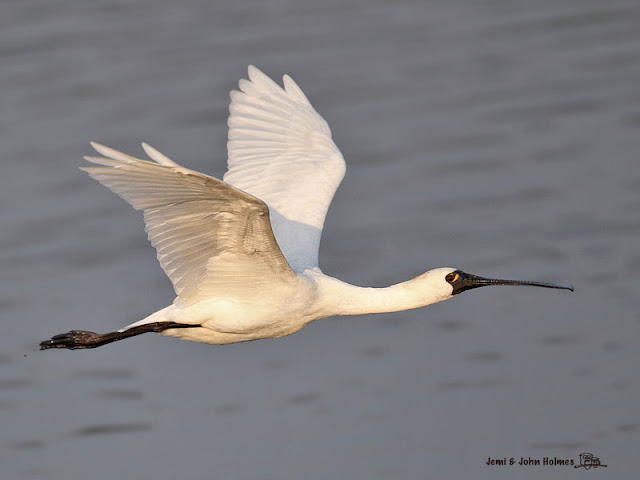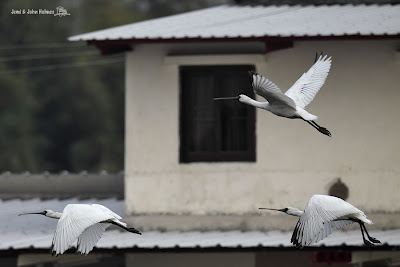Dalmatian Pelicans used to be quite numerous in Deep Bay. In the dim and distant past, - in an era when fieldscopes were cruder and field guides to East Asia non-existent - they were misidentified as Spot-billed Pelicans.
Deep Bay's highest-ever Pelican count was a flock of 85 on 21st February 1960. This was when Harold Macmillan was Prime Minister of Great Britain and Dwight D. Eisenhower still President of the USA - yes, a long time ago.
Since then it has all been downhill for the Dalmatian Pelican,
regular wintering numbers fell steadily, and were around twenty-something in the 1980s, one of my early memories of Deep Bay.
It was a mark of how long some people had been birding in Hong Kong that they would boast about how many Dalmatian Pelicans they could remember seeing in Deep Bay.
You know, the same people who ( probably under the influence of alcohol) would tell you that they remembered tigers ambushing people at bus queues in Nathan Road.
But I digress (As the great Tom Lehrer used to say).
As recently as 2006 there were 14 Pelicans in the Bay in late winter, but then in successive years the figure were 2,0 and 1.
Thanks to better observer coverage in mainland China, we know that about a dozen Dalmatian Pelicans have been wintering in Haifeng, eastern Guangdong Province. They might be "our" group, taking advantage of climate change to not come as far south, and good luck to them if that is the case.
This winter a solitary Pelican turned up in mid-December (2009).
So here he is - the last of the Pelicans; regarding his surroundings on the mudflats on January 2nd, 2010.

He was last definitely seen in Deep Bay on Sunday January 3rd, but - despite a lot of people looking - not noted since.
"Ladies and Gentlemen, Elvis has just left the building....."


 Three views of a Lesser Frigatebird - we only get about one a year on average..
Three views of a Lesser Frigatebird - we only get about one a year on average.. and Relict Gull, perhaps the same one seen out in the bay a fortnight ago.
and Relict Gull, perhaps the same one seen out in the bay a fortnight ago.













